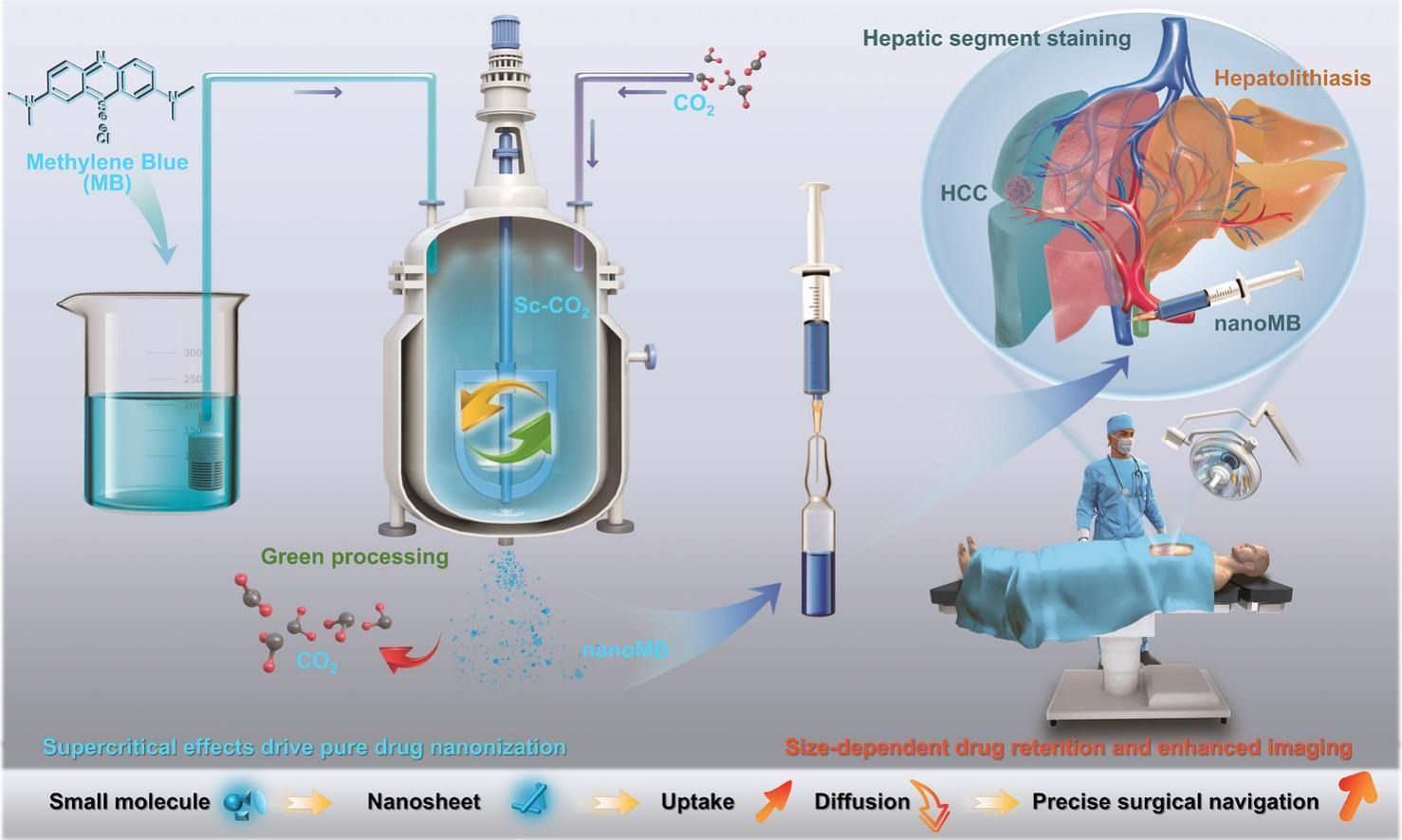Abstract
Anatomical hepatectomy is a widely employed surgical technique due to its capacity to excise hepatic lesions and minimize risk variables associated with postoperative recurrence. However, preserving the anatomical and functional integrity of the liver remains a critical concern and a significant challenge in determining the boundaries of targeted liver segments. This study utilized a super-stable pure-nanomedicine formulation technology (SPFT) to synthesize methylene blue nanosheets (nanoMB) without external carrier, nanoMB did not alter the chemical composition of methylene blue (MB), it was purely a physical aggregation of molecules. The nanosize and morphology of nanoMB enhanced the internalization and retention in hepatocytes and liver tissues, addressing the limitations of unclear staining due to the rapid diffusion of MB during liver segment resection. The in vivo model of blue staining of liver segments in rats and rabbits confirmed that nanoMB can extend the staining duration of liver segments by over 3 h, whereas free MB continues for <1 min, thereby addressing the time constraints associated with liver resection. In subsequent human clinical trials, a single low-dose nanoMB injection was employed to mark hepatic segment boundaries during anatomical hepatectomy for hepatocellular carcinoma and hepatolithiasis. The boundaries continued to be distinct for over 30 min, effectively guiding the surgical resection. The postoperative liver function recovered to normal, with no complications or disease recurrence reported. In conclusion, carrier-free nanomedicine enhances hepatic visualization by improving cellular uptake and hepatic segment retention. This advancement facilitates precise surgery and establishes a new paradigm for translational research from bench to clinic.

文章链接:https://doi.org/10.1016/j.cej.2025.166075